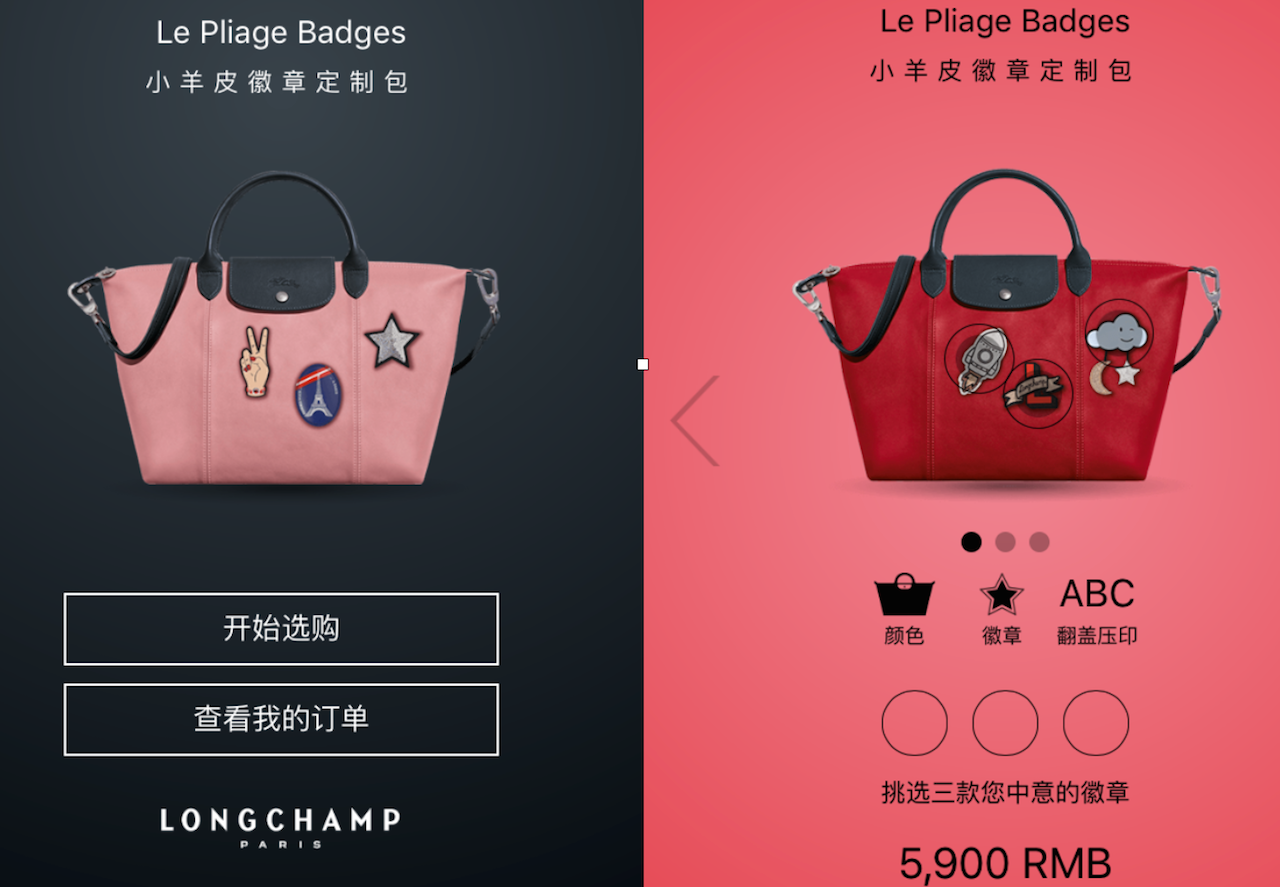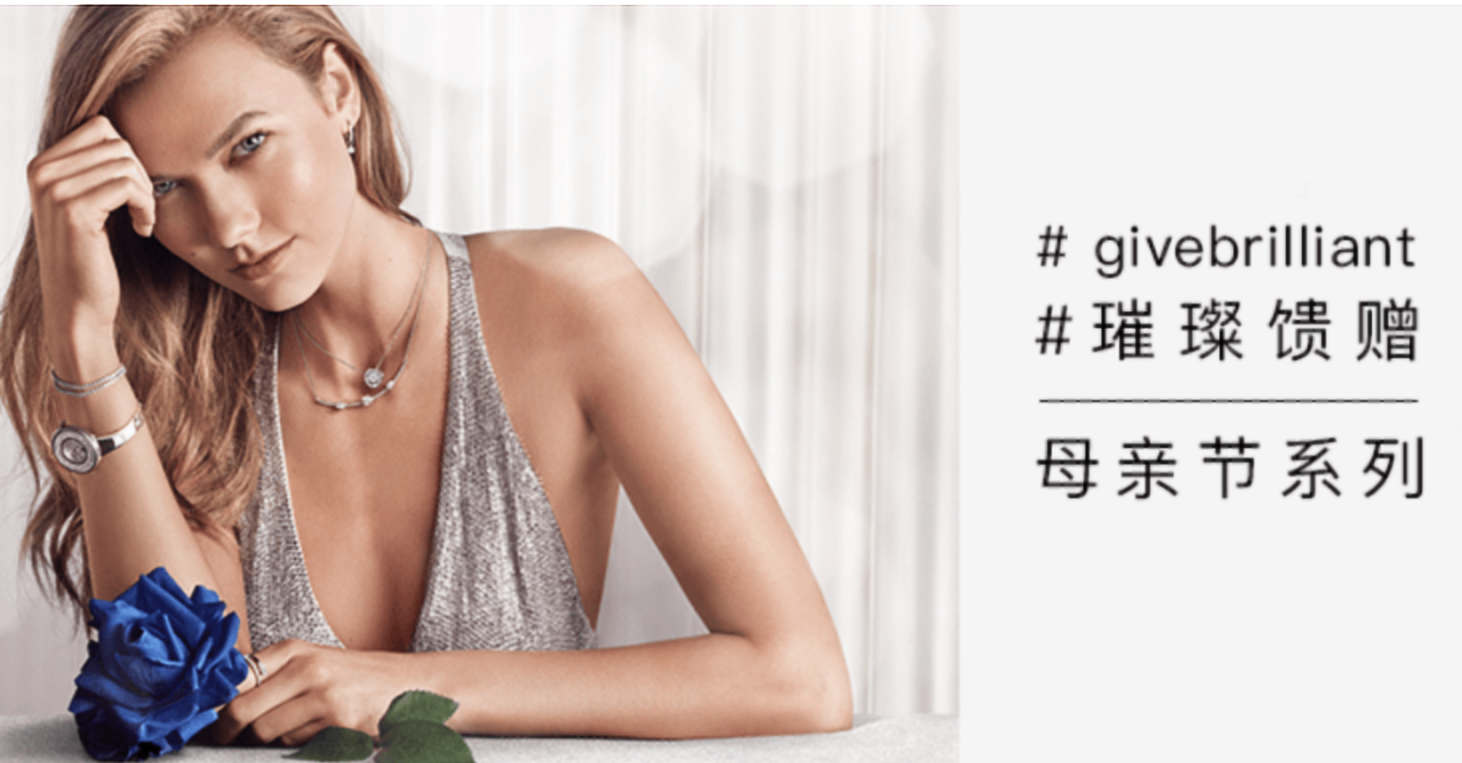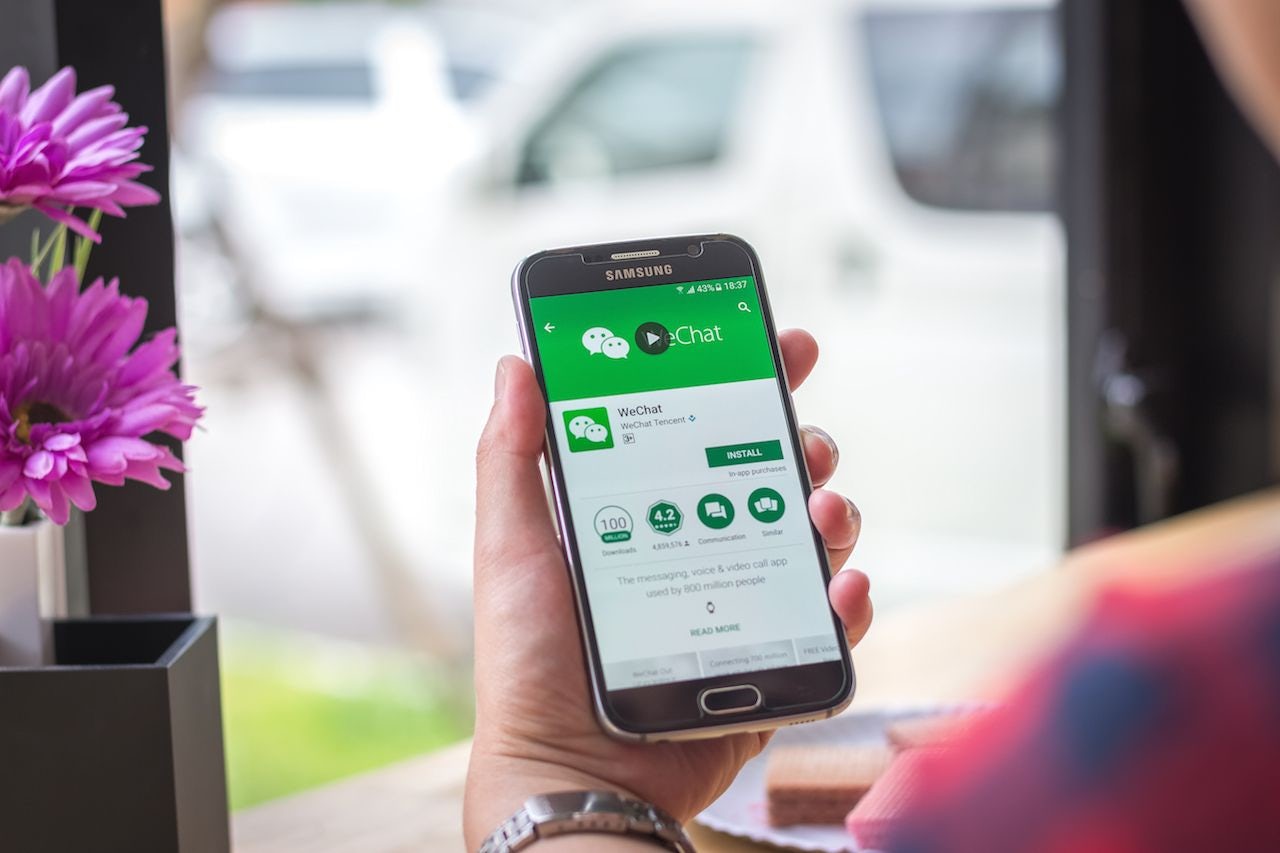WeChat officially released its Mini Program platform in January 2017, with over 2,000 mini programs being launched at the start. Many well known luxury brands have become early adopters of this platform, namely Longchamp, Dior, and Michael Kors. These brands have taken a creative approach to making use of the app's new feature, offering value-added service to their followers which ultimately leads to increased following and revenue.
In the following post, we analyze in detail the mini programs of these three luxury brands and provide suggestions on what other luxury brands can learn from them. What are the key areas luxury brands should consider before opening their own mini programs?
The following case studies were first summarized by Zhao Yuan, who wrote a piece on her WeChat column “Only About Fashion E-Commerce” (WeChat ID: fashion_guagua). Additional interviews and takeaways were written by Jing Daily.
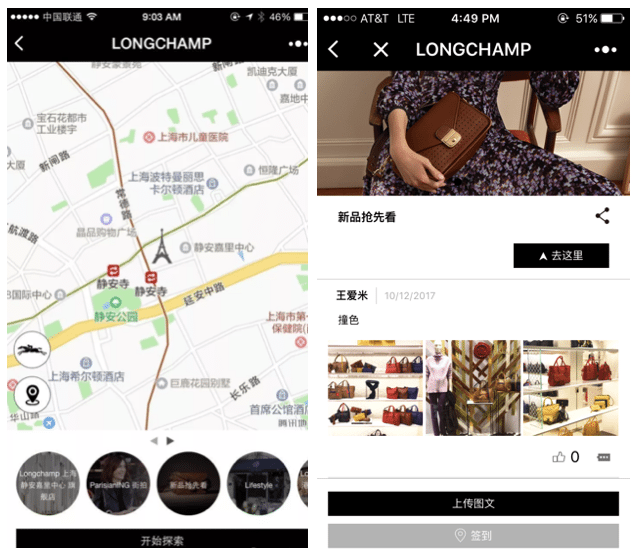
1. Longchamp#
Mini App launch: April 2017#
Number of Mini programs: 2#
Types of Mini program: Personalization, UGC (User-Generated Content)
#
French luxury brand Longchamp built two WeChat mini programs with very distinct functionalities. One is an online boutique that focuses solely on product customization. It allows users to create unique Longchamp Le Pliage bags with customization options of two colors, three badges, and an imprint.
The other mini program is a location-based photo sharing platform. Users can search the store location of Longchamp and use the digital map to navigate their way there. The subpage for each location is designed to look and feel like the WeChat moment sharing pages. Users can check in and share the photos of their Longchamp bags with the mini-community.
Takeaway:#
Longchamp's first mini program is basic and minimal. On one hand, it’s very easy to navigate, but it is perhaps rather limiting for the customer who desires to customize more styles or restyle the Longchamp bags that he/she has already owns. Nevertheless, it’s a transaction-focused mini program with a hint of personalization. Therefore, its data and insights can be used by the brand to provide a better personalization service in the future.
Comparatively, the second mini program is harder to navigate. The photo-sharing page takes longer to load but once shown the page is filled with fresh user-generated content. While WeChat is a one-to-one communication tool between the brand and the customer, by building a community to encourage fans to share pictures with each other, it creates a closed ecosystem that has seamlessly integrated with the users' habits on WeChat.
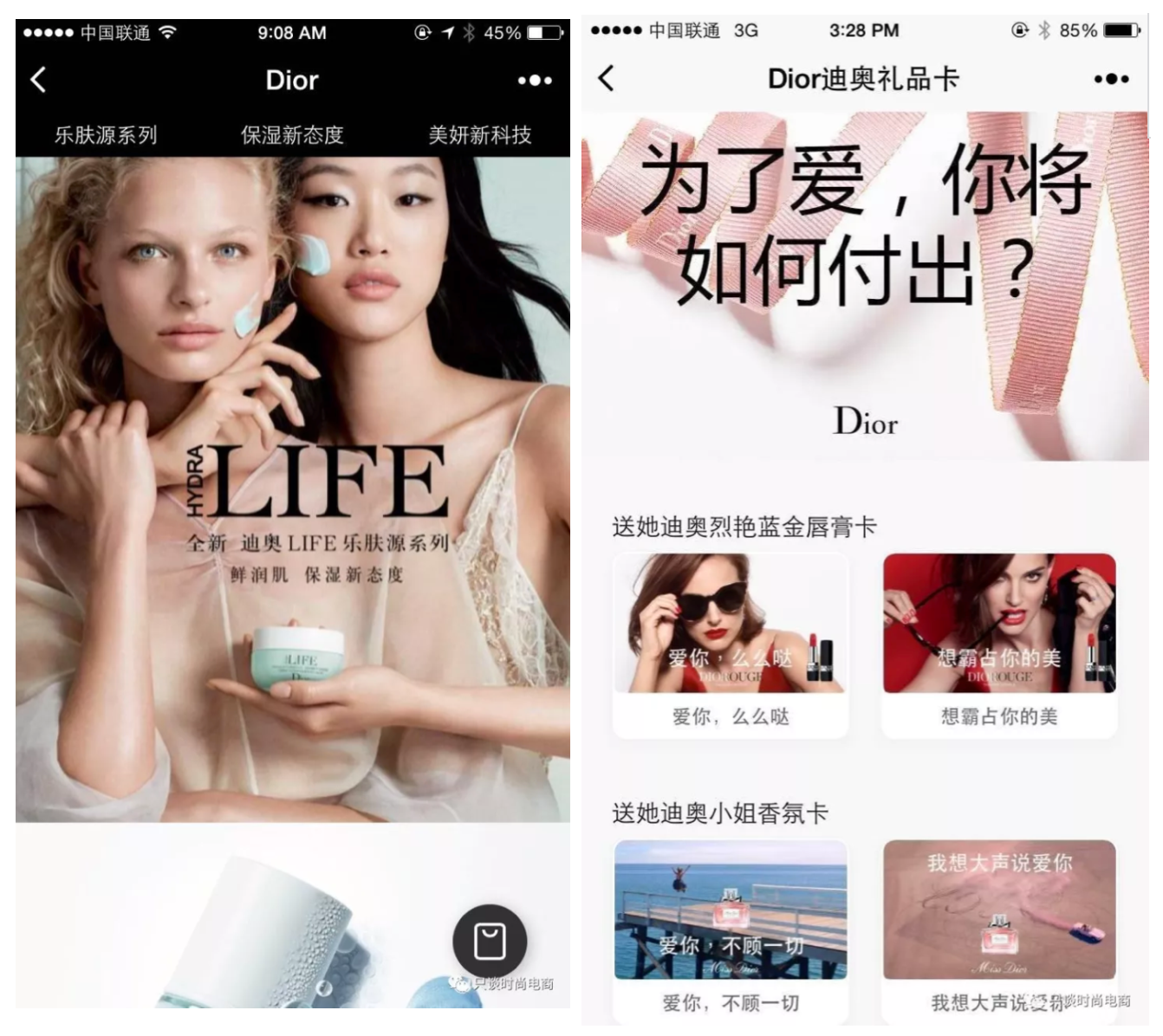
2. Dior#
Mini App launch: August 2017#
Number of Mini programs: 2#
Types of Mini program: Beauty E-Commerce, Gift Card#
Similar to Longchamp, Dior has two mini programs serving different functions. One is an online boutique, featuring limited items including the hydra LIFE skincare collection and Dior Addict lipstick. The price range of the products is from 300 yuan to 600 yuan (about USD 45-91). Customers can view a product introduction and the associated campaign videos. However, the page is not responsive when the users click on the buy button.
The other mini program by Dior was first created during this year’s Chinese Valentine’s Day, focusing on gift sharing. Each gift card has a love message on the cover, with the gift options of lipstick and perfume. Once purchased, the customer can send the card directly to their loved ones on WeChat, and the gift can be picked up from a Dior's retail store nearby.
Takeaway:#
Dior built both mini programs to sell relatively small-value items—an easier buying decision for customers to make compared to the purchase of a 5000 yuan (760 USD) handbag. The second virtual gift card mini program is especially interesting. Starbucks was one of the first few brand to experiment with this concept; instead of Dior lipstick and perfume, it allows users to send a coffee treat to their friends. Starbucks' campaign was very welcomed in China for its convenience and fun social value. However, when a luxury brand applied this model, consumers complained that the value of luxury gifting is missing as a digital gift card can’t substitute the feeling of receiving a well-wrapped physical gift in person.
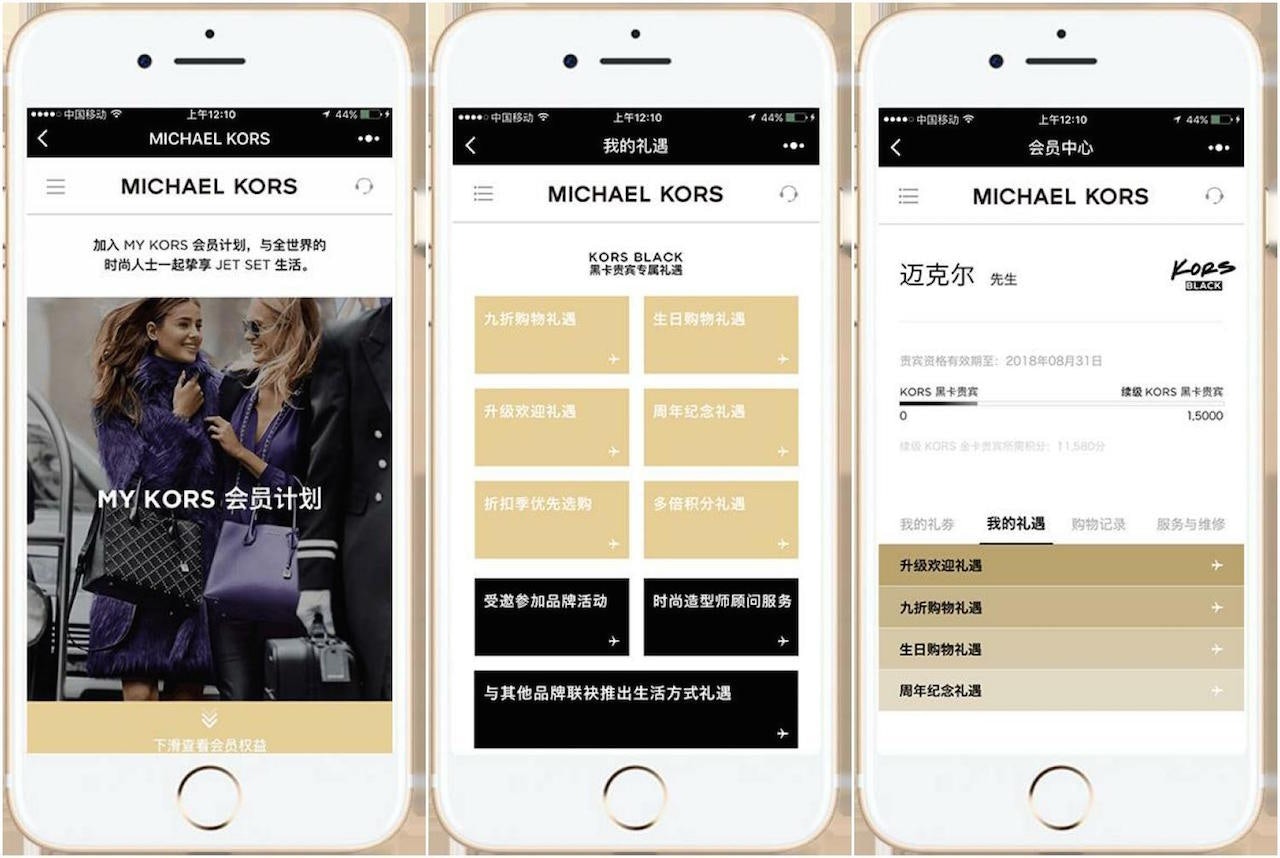
3. Michael Kors#
Mini App launch: August 2017#
Number of Mini programs: 1#
Type of Mini program: Loyalty program#
Michael Kors launched a mini program that focused on membership services, becoming the first luxury brand to do so. This move completes consumers’ offline journey with online care. For example, when consumers are shopping in a Michael Kors store, they can check shopping details in real-time, review the shopping experience and also get after-sale service benefits from the mini program.
Takeaway:#
According to Michael Kors' staff, the purpose of opening this mini program is to upgrade consumers’ in-store shopping experiences to ensure they can receive the same level of service in all other channels. “Though the relevant membership service is more or less focused on purchasing product,” Zhao said from her observation as a non-MK member, “if I am not buying anything, my membership benefits are rather limited.” Zhao further suggests that brands take advantage of the program to give offers in general if they want to acquire new members and increase more intimate opportunity for consumers to become familiar with the brand.
When creating a mini program, brands should think about:#
Can your mini program add value?#
Luxury brands should invest in this channel with a very clear vision, answering questions such as: Is my mini program going to substitute App function, or will it be integrated as part of my retail business, or will it simply be a marketing tool during important promotion times? All in all, WeChat mini programs will be an additional channel for brands to invest money and energy in. Brands can risk diluting value and functions of existing channels if they rush into it.
Can you generate traffic for your mini program?#
It is going to be expensive for luxury brands to generate traffic for their mini programs if they merely rely on growing users organically. They are advised to make full use of their existing channels such as retail stores, official websites, and WeChat accounts to direct traffic to their mini program. In this way, brands can not only save marketing costs but also build a more cohesive user experience.
Can your mini program build emotional connection with consumers?#
For luxury brands, building an emotional connection with consumers is important. However, it is a tricky task to be accomplished when adding a digital channel like a mini program. Brands should not treat it as an automatic service that can lessen their work of serving consumers but make it an extension of their offline customer service. As we can see from the case studies above, many brands chose to place mini programs in a retail environment to add an in-person touch.
